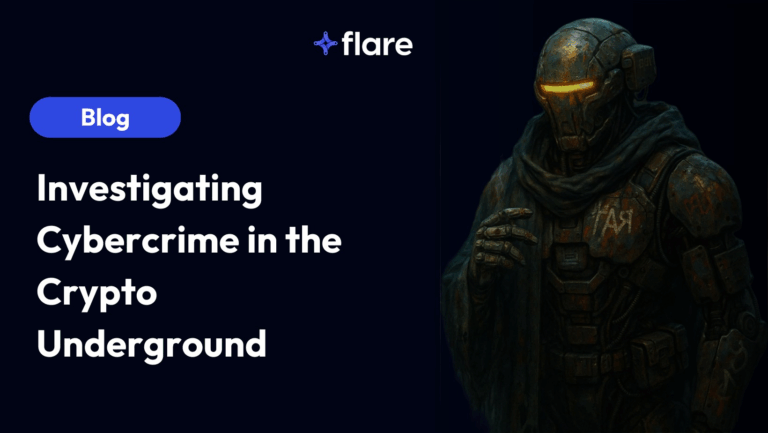
Financial services institutions, with their vast amounts of sensitive data and monetary transactions, are prime targets for threat actors. The effects of such attacks can be catastrophic, leading to substantial financial losses, compromised client data, and damage to the institution’s reputation.
Threat intelligence plays a crucial role in protecting these institutions from dark web threats. By leveraging sophisticated tools and techniques, threat intelligence can infiltrate these hidden corners of the internet to gain insights into potential threats and enable proactive protection measures.
According to our research of data leaks across eight industries, financial services has the fourth lowest ratio of password leaks per employee. We’ll explore what threats face financial institutions and how they can protect themselves.
Understanding the Dark Web & Financial Services
The dark web is renowned for its anonymity, making it a hub for various activities where secrecy is paramount. While some use it to evade censorship or maintain privacy, others exploit this obscurity for illicit activities, from selling stolen data and illegal goods to hosting forums for hacking advice and tools.
What Do Threat Actors Want from the Financial Services Industry?
Financial services institutions, given the nature of their business and the wealth of sensitive data they handle, are particularly attractive targets for dark web denizens. Personal identifiable information (PII), credit card details, bank account credentials, and other financial data can be bought and sold here, often at shockingly low prices.
Unique Dark Web Threats to Financial Institutions
Moreover, financial institutions are not just at risk from the trade in stolen data. They also face threats from tailored cyber-attacks planned on the dark web. Hacktivist forums and cybercriminal networks may conspire to launch coordinated attacks against particular institutions, which can cause significant operational disruptions and financial losses.
Sophisticated threat actors may also offer “Banking Trojans” or “Ransomware-as-a-Service” on the dark web, allowing cybercriminals of various skill levels to launch potent attacks. These malicious software are designed to infiltrate banking systems, siphon off funds, or lockout legitimate users until a ransom is paid. Malicious threat actors also sell login credentials to banking app accounts with funds in them.
Threat Landscape: Key Cyber Threats Financial Institutions Face from the Dark Web
The dark web offers cybercriminals a haven to plot, execute, and profit from illicit activities, with financial institutions often in the crosshairs. The increasing commodification of cybercrime contributes to more threat actors of varying levels becoming involved in illicit activities. Understanding the range of threats that emanate from this concealed corner of the internet is critical to formulating robust cybersecurity strategies. Here are some of the key cyber threats that financial institutions face from the dark web:
Data Breaches
One of the most prevalent threats financial institutions face is the risk of data breaches. Stolen data—ranging from customer’s personal information and credit card details to internal corporate data—is a hot commodity on the dark web. The fallout from a significant data breach extends far beyond financial losses, often inflicting long-term reputational damage that can erode customer trust.
Banking Trojans
Banking Trojans are malicious programs designed to steal banking credentials. Often sold or even rented on the dark web, these Trojans infiltrate a user’s computer, typically through a seemingly harmless email attachment or download. Once inside, they can capture keystrokes, hijack transactions, or create a backdoor for future access.
Ransomware Attacks
Ransomware attacks have surged in recent years, with financial institutions among the favored targets. Cybercriminals use ransomware to encrypt a victim’s data or systems, only offering the decryption key in return for a hefty ransom. Alarmingly, the dark web has fueled the spread of Ransomware-as-a-Service (RaaS), where malicious actors of various levels can purchase ready-made ransomware instead of creating their own.
Distributed Denial of Service (DDoS) Attacks
DDoS attacks aim to disrupt an institution’s services by overwhelming their networks with excessive traffic. These attacks can cause significant operational disruptions, impairing the institution’s ability to serve their customers and damaging their reputation.
Insider Trading Forums
The dark web also hosts forums where threat actors can buy and sell stolen insider information. This can include non-public information about upcoming mergers, acquisitions, or other market-moving news, which can be exploited for illicit financial gain.
The dark web threat landscape is continually evolving, with new threats emerging as quickly as existing ones are countered. This makes it imperative for financial institutions to stay abreast of the latest developments and arm themselves with the best defenses. This is where cyber threat intelligence comes in.
The Role of Cyber Threat Intelligence in Mitigating Dark Web Risks
In the face of ever-evolving cyber threats from the dark web, financial institutions must be proactive. This is where cyber threat intelligence comes into play. Cyber threat intelligence involves collecting and analyzing information about potential threats to create a comprehensive picture of the risk landscape. By understanding the tactics, techniques, and procedures (TTPs) of threat actors, financial institutions can better anticipate attacks and fortify their defenses accordingly.
Here’s how cyber threat intelligence can help mitigate dark web risks:
Proactive Threat Hunting
Threat intelligence enables proactive threat hunting, where analysts actively seek out potential threats before they manifest into attacks. This could involve monitoring dark web forums for mentions of their organization or upcoming attacks, identifying patterns in threat actor behavior, and staying abreast of emerging cybercrime tools and techniques.
Informed Decision Making
The insights gleaned from cyber threat intelligence can inform strategic decision-making at all levels of the organization. This can guide the allocation of cybersecurity resources, the development of staff training programs, and the implementation of new security technologies and policies.
Incident Response and Recovery
When a security incident does occur, threat intelligence can support a faster and more effective response. Understanding the nature of the threat can help identify its source and mitigate its impact. Post-incident, this intelligence can aid in recovery efforts and help prevent similar attacks in the future.
Enhanced Risk Management
With a clearer view of their risk landscape, financial institutions can enhance their risk management practices. This includes not only identifying and prioritizing risks but also determining the most effective mitigation strategies.
Vendor Risk Assessment
Financial institutions often work with a multitude of vendors, each potentially introducing new vulnerabilities. Cyber threat intelligence can support more comprehensive vendor risk assessments, helping to ensure that partners aren’t inadvertently introducing new risks.
In an environment where cyber threats are increasingly sophisticated and persistent, cyber threat intelligence serves as an essential tool in a financial institution’s cybersecurity arsenal. By illuminating the dark corners of the web, it empowers institutions to anticipate and counter threats, safeguarding their operations, their data, and ultimately, their customers.
Emerging Trends and Future Perspectives: Staying Ahead of Dark Web Threats in Financial Services
The ever-changing landscape of the dark web presents both challenges and opportunities for financial institutions. Staying ahead of dark web threats requires an understanding of emerging trends and continuous adaptation to this dynamic environment. Here are some key trends and future perspectives that could shape the way financial institutions deal with dark web threats:
- Increase in Sophisticated Cyber Attacks: Cyber threats are growing not just in number, but also in sophistication. Threat actors are continuously improving their tactics, techniques, and procedures (TTPs), making use of advanced tools and exploiting new vulnerabilities. This includes more complex ransomware attacks, targeted spear-phishing campaigns, and advanced persistent threats (APTs) that can lie undetected within a network for extended periods.
- Rise of Cybercrime-as-a-Service: The cybercrime-as-a-service model, where sophisticated cybercrime tools and services are offered for sale or rent on the dark web, is expected to expand further. This lowers the entry barrier for would-be cybercriminals and can lead to an increase in the volume and diversity of attacks.
- Greater Use of AI and Machine Learning: Just as financial institutions are leveraging artificial intelligence (AI) and machine learning (ML) for cyber defense, threat actors are also expected to use these technologies to enhance their attacks. This can include AI-driven phishing campaigns that can better mimic legitimate communications, or ML algorithms that can identify patterns and weaknesses in cybersecurity defenses.
- Regulatory Changes: As the threat landscape evolves, so too does the regulatory environment. Financial institutions need to keep abreast of changes to data protection and cybersecurity regulations in the jurisdictions they operate in. This includes understanding emerging standards for managing and reporting cyber risks.
- Growing Importance of Cyber Threat Intelligence: Given these trends, the role of cyber threat intelligence in mitigating dark web threats is set to become even more critical. Financial institutions will need to invest in advanced threat intelligence capabilities, including AI and ML technologies, to proactively identify and respond to emerging threats.
Staying ahead of dark web threats in financial services is not a one-time effort, but a continuous process of monitoring, learning, and adapting. By keeping an eye on emerging trends and leveraging the power of cyber threat intelligence, financial institutions can navigate the murky waters of the dark web and safeguard their operations, their data, and their customers.
Monitoring the Dark Web for the Financial Services Industry with Flare
In this complex and ever-evolving cyber landscape, the dark web presents significant threats to financial institutions, which hold an abundance of sensitive information.
Flare helped prevent a data breach for a North American investment firm’s portfolio company by identifying an infected device for sale. Book a demo to see how we can help protect your financial services organization.





